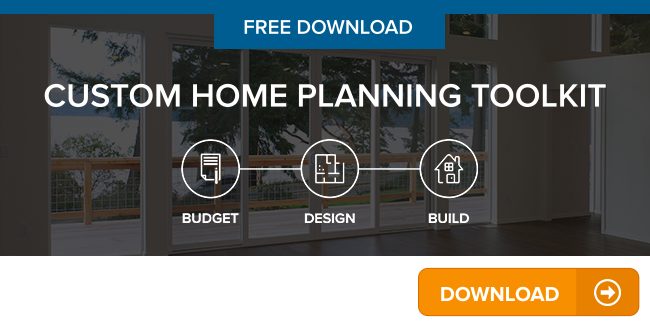Have you always dreamed of living on the waterfront? A home built near the water offers so many simple joys. Is there anything more serene than watching soft waves as they lap against the shore or listening to the whispering breeze that rustles through the trees? What is more awe-inspiring than gazing into the reflection of stars on the water? While there’s nothing quite as tranquil as the water, the process of building a waterfront home can be quite nerve racking. Geo-tech surveys, shoreline management plans, shoreline master plans, setbacks, view easements, septic placement, allowable lot coverage, height restrictions, and that’s just the beginning of a long list of considerations. There’s no doubt about it. Building on the waterfront is a lot more complicated than building elsewhere. But don’t let that scare you if it’s your dream location. Go into the building process knowing what you should expect. In this post, we’ll discuss what you need to know when you’re building on a waterfront property. Let’s look at the most common questions we’re asking about building on a waterfront.
Can I Build Anywhere I Want on my Waterfront Property?
When building on a waterfront lot, there are a lot of things to consider. For example, is the land that you own in the middle of a bald eagle habitat? These once-endangered symbols of our nation are still protected by federal law. Fortunately, the eagle population is on the rise, but possibly unfortunately for you, eagles prefer living near the water. If you disturb an eagle’s nest, you can be fined $100,000 and imprisoned for one year (for the first offense). If eagles live on your property, you’ll need to obtain a Federal eagle nonpurposeful take permit that grants you the ability to clear trees or build near an eagle’s nest. You’ll need to obtain specialist reviews for your lot, including soil, stability, flood plains, and geotechnical reports. These reports are necessary for getting a permit to build your home on the waterfront. A geotechnical engineer will do a study of the soil, slope conditions, and erosion history of the property to determine a setback from the shoreline and/or top of the slope. A building department official will also participate to determine the ‘ordinary high water mark’ of a waterfront property. This high-water mark is crucial in establishing how close you may place your home to the water.Is My Lot the Right Size for Building?
Looks can be deceiving when it comes to waterfront lots. Many beautiful waterfront lots appear to have plenty of room to build upon, but zoning restrictions can restrict where you’re able to build on your property. Most government jurisdictions impose a limit to the amount of building you can do on a property– that includes your home, your driveway, and your decks. This is known as your allowable lot coverage. It requires careful measurement to not exceed this limit, which is actually easy to do. You’ll also need to consider height restrictions and view easements, both from zoning restrictions and neighborhood CCRs, to determine the size of home that can be designed on your waterfront property.What About Septic Systems on a Waterfront?
To build your waterfront home at the optimal location, the placement and design of your septic system is crucial. First, a septic designer will need to conduct soil test to determine what type of wastewater treatment system you’ll need. For example, will you need a conventional or a mound? Next, what will be the ideal location for your septic system? The placement of your septic tank and drain field must be coordinated with all the other setbacks and specialist reviews. As you can see, there are many moving parts to building on the water. Also, you’ll need a drainage plan. For waterfront properties, a drainage engineer needs to be consulted to ensure that drainage from a new home does not harm any existing slopes, bluffs, or other waterfront critical areas. The ‘engineered drainage plan’ needs to be coordinated with the septic design to ensure proper space and separation.Will I Still Have a View?
Although there are a lot of restrictions and additional considerations involved in building on the water, you can still enjoy a beautiful view if you choose the right builder. You need a builder who understands how to coordinate these sometimes confusing components to create the dream property that you’ve always wanted. Feeling overwhelmed? Don’t worry, we’re here to help. Schedule a Project Analysis today. We’ll analyze your site for free and let you know what to expect during the building process. ]]>
]]>

